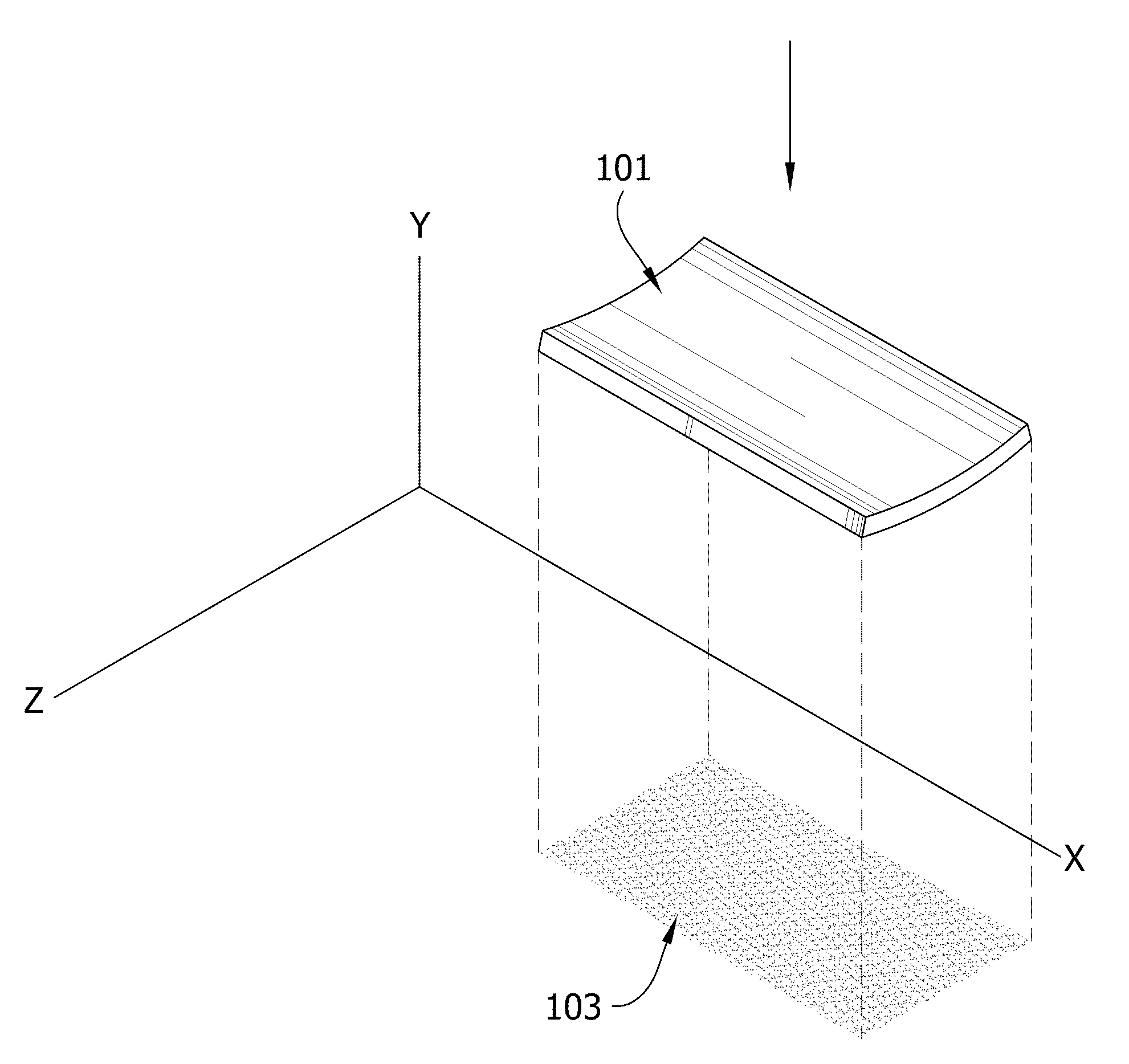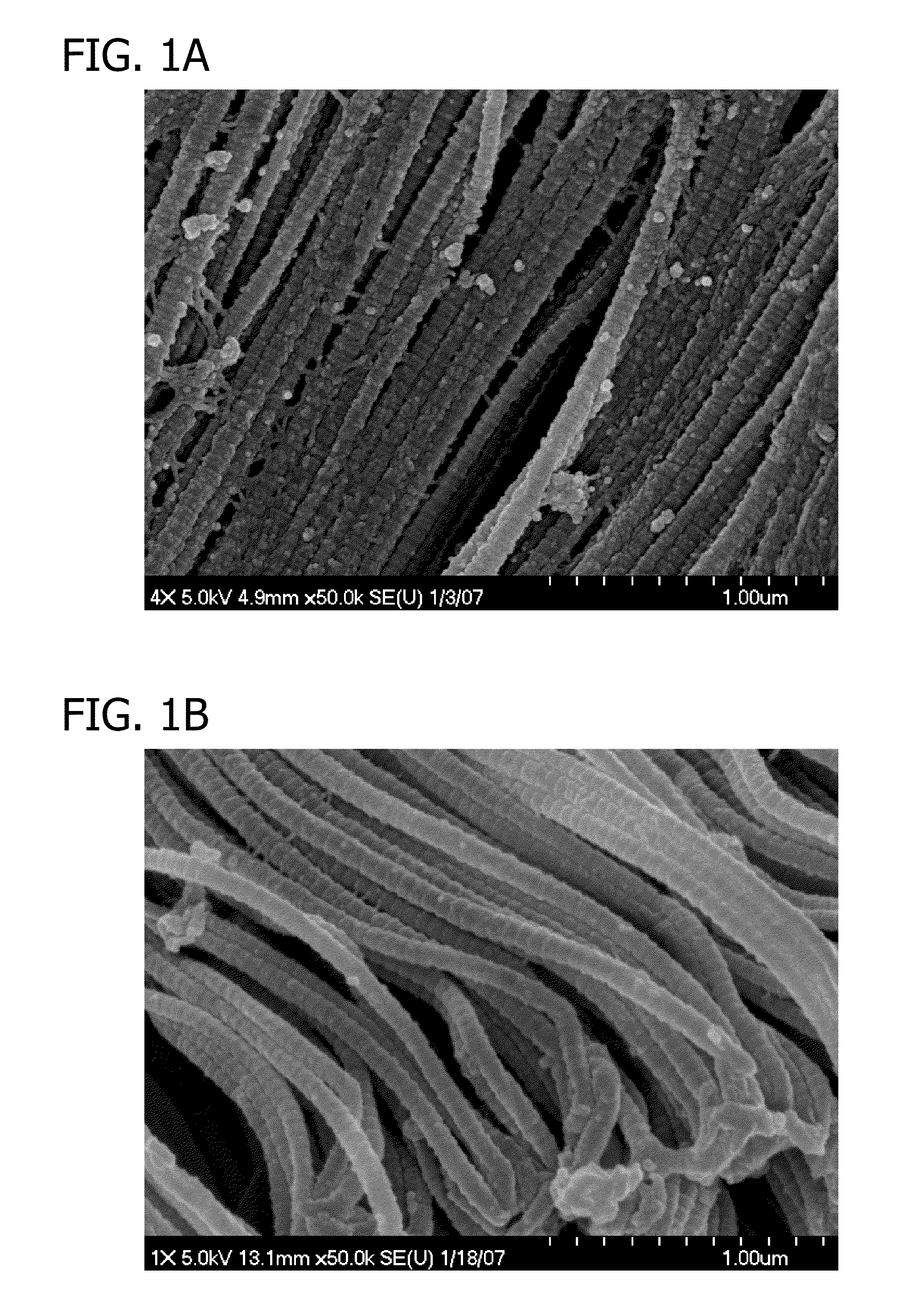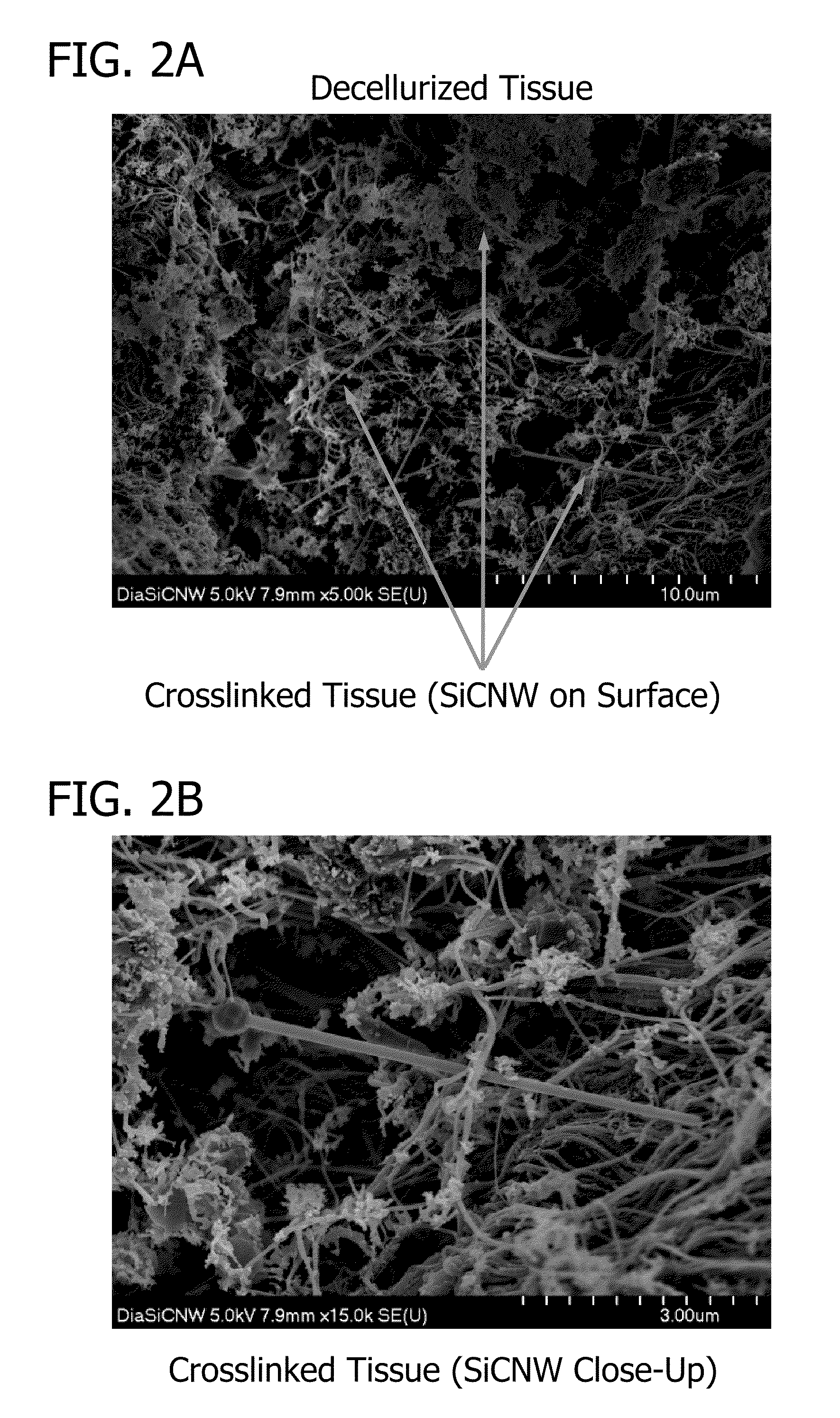Bionanocomposite for tissue regeneration and soft tissue repair
a biocomposite and soft tissue technology, applied in the field of prosthetic materials, can solve the problems of inability to meet the needs of soft tissue repair biocomposite materials, inability to manufacture biocompatible materials, etc., to achieve the effect of improving overall biocompatibility, promoting cellular attachment, and promoting tissue in-growth
- Summary
- Abstract
- Description
- Claims
- Application Information
AI Technical Summary
Benefits of technology
Problems solved by technology
Method used
Image
Examples
example 1
Decellularized Porcine Diaphragm Tendon Crosslinked with AuNP or SiCNW
[0090]Decellularization of central tendon portion of porcine diaphragm. When selecting and storing natural tissue, the surrounding muscle of the porcine diaphragm is first removed so that only the collagen rich central tendon portion remains. The resulting natural tissue is placed immediately into Tris buffer solution (pH 8.0) containing 5 mM ethylenediaminetetraacetic acid (EDTA), 0.4 mM phenylmethanesulfonyl fluoride (PMSF), and 0.2% (w / v) sodium azide and stored at 4° C. until ready to use.
[0091]In the decellularization step, a 7 cm×7 cm piece of natural tissue is placed into Tris buffer solution (pH 8.0) containing 5 mM ethylenediaminetetraacetic acid (EDTA), 0.4 mM phenylmethanesulfonyl fluoride (PMSF), 0.2% (w / v) sodium azide, and 1% (v / v) tri-n-butyl phosphate (TnBP). The reaction is placed on a shaker table at room temperature for 24 hours at 225 rpm.
[0092]In the rinsing step, the resulting tissue is rinse...
example 2
[0112]Experimental design. Forty-five male, Sprague-Dawley rats were divided into the following five treatment groups. Fifteen rats were sacrificed at each of the three time points (seven, twenty-one, and ninety-seven days). The abdominal walls of the rats and any remaining scaffold materials were recovered at these times and subjected to histological analysis to determine whether differences existed between the inflammatory response to the scaffolds, fibroblast infiltration, and neovascularization.
[0113]“Control” rats treatment group (one per time point): Rats in this treatment group did not undergo surgery, so tissues recovered from these animals served as examples of normal, healthy abdominal wall. “Sham” rats treatment group (two per time point): Rats in this treatment group underwent the surgical procedure but no scaffold materials were implanted. “Decellularized” scaffolds treatment group (four per time point): Rats in this treatment group received...
example 3
AuNP-Crosslinked Bionanocomposite, Surgisis, and Permacol Study
[0156]Experimental design. The following four biologic tissue scaffold materials were implanted into the abdominal walls of fifteen female, Landrace pigs. The abdominal wall of each pig was divided into four regions separated from each other by at least one inch on each side. A 16 cm2 piece of each of the four types of scaffolds was placed into these quadrants, and the placement location of each type of scaffold was randomly determined for each pig. Five pigs were sacrificed at each of the three time points (one, three, and six months). Full thickness sections of the abdominal walls and any remaining scaffold materials were recovered at these times and subjected to histological analysis.
[0157]“Non-crosslinked” (Surgisis) scaffolds: This scaffold material was comprised of several layers of non-crosslinked porcine small intestine submucosa. (Cook Biotech Incorporated, West Lafayette, Ind.) “Slightly crosslinked” (AuNP-cros...
PUM
 Login to View More
Login to View More Abstract
Description
Claims
Application Information
 Login to View More
Login to View More - R&D
- Intellectual Property
- Life Sciences
- Materials
- Tech Scout
- Unparalleled Data Quality
- Higher Quality Content
- 60% Fewer Hallucinations
Browse by: Latest US Patents, China's latest patents, Technical Efficacy Thesaurus, Application Domain, Technology Topic, Popular Technical Reports.
© 2025 PatSnap. All rights reserved.Legal|Privacy policy|Modern Slavery Act Transparency Statement|Sitemap|About US| Contact US: help@patsnap.com



